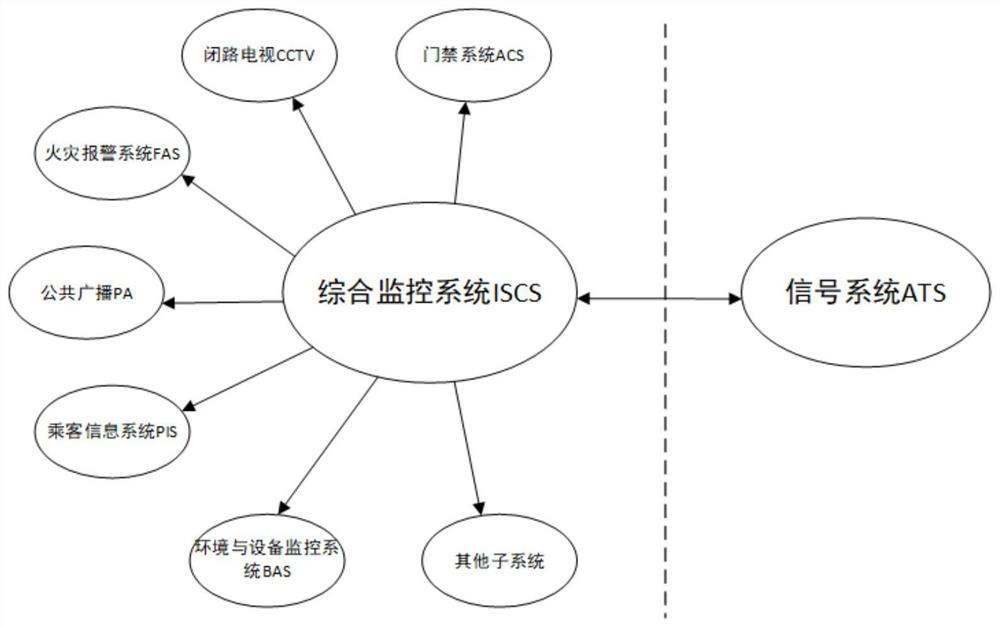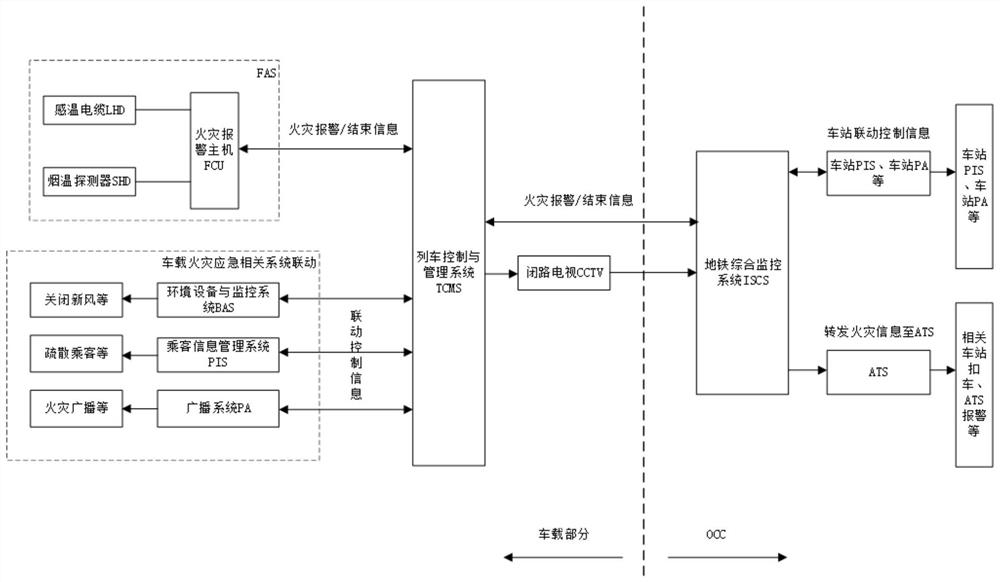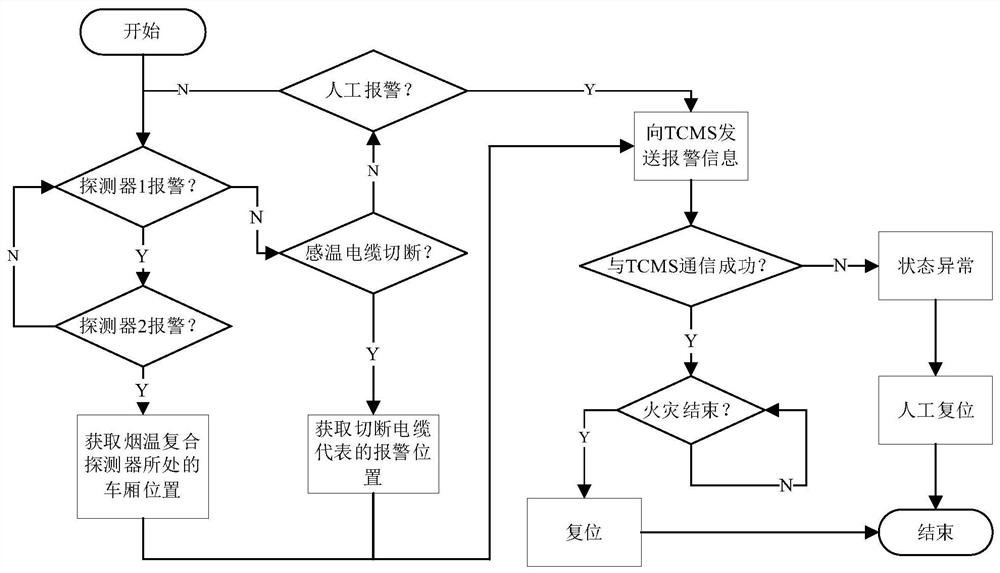Train fire linkage and modeling verification method
A fire and linkage technology, used in fire alarms, electrical fire alarms, and fire alarms that rely on radiation to achieve the effect of ensuring the safety of trains and improving reliability.
- Summary
- Abstract
- Description
- Claims
- Application Information
AI Technical Summary
Problems solved by technology
Method used
Image
Examples
Embodiment 1
[0038] figure 1 is a schematic diagram of the ISCS system structure, see figure 1 , ISCS includes: FAS, BAS, ACS, PA (public address), PIS (passenger information system) and CCTV (closed circuit television) and other subsystems, ISCS comprehensive automatic monitoring system, has the advantages of high integration and interconnection, ISCS will separate The monitoring functions of various weak current systems are deeply integrated, which is conducive to the coordination and linkage when emergencies occur. In addition, ISCS also has a communication interface with railway signaling systems, mainly ATS (Automatic Train Supervision). The ISCS system is deployed in the OCC (Operation Control Center). In the OOC, the dispatcher monitors and controls the entire line of trains and equipment through the ISCS.
[0039] Specifically, BAS is responsible for comprehensive and effective automatic monitoring and management of HVAC system equipment, water supply and drainage system equipmen...
Embodiment 2
[0056] Compared with the traditional automata, the timed automaton adds a time-constrained mechanism, and at the same time adds a diagram annotation state transition, which has a very good effect on expressing the time-constrained characteristics of a real-time system. It represents time using finite variables and annotates the state transition diagram with a constraint. Constraints can determine the transition conditions of the system. If the constraints are related to time, and the time variable is used to determine the timing of state transition, it is called time limit. In a real-time system, usually multiple timed automata work together to form a timed automaton network.
[0057] UPPAAL is jointly developed by Aalborg University in Sweden and Uppsala University in Denmark. It is a formal tool for constructing timed automata models based on timed automata theory. UPPAAL uses professional syntax to search the state space of the system model to verify the security, reachabi...
PUM
 Login to View More
Login to View More Abstract
Description
Claims
Application Information
 Login to View More
Login to View More - R&D
- Intellectual Property
- Life Sciences
- Materials
- Tech Scout
- Unparalleled Data Quality
- Higher Quality Content
- 60% Fewer Hallucinations
Browse by: Latest US Patents, China's latest patents, Technical Efficacy Thesaurus, Application Domain, Technology Topic, Popular Technical Reports.
© 2025 PatSnap. All rights reserved.Legal|Privacy policy|Modern Slavery Act Transparency Statement|Sitemap|About US| Contact US: help@patsnap.com



